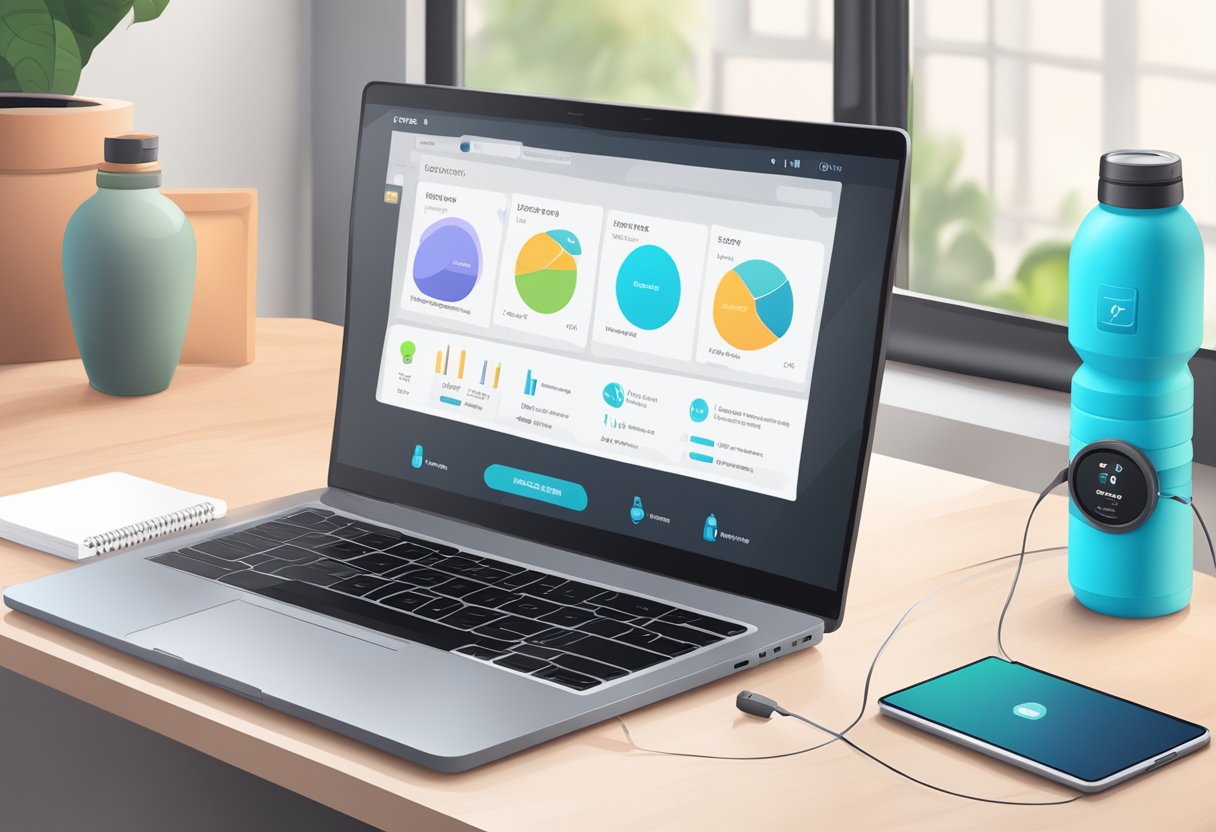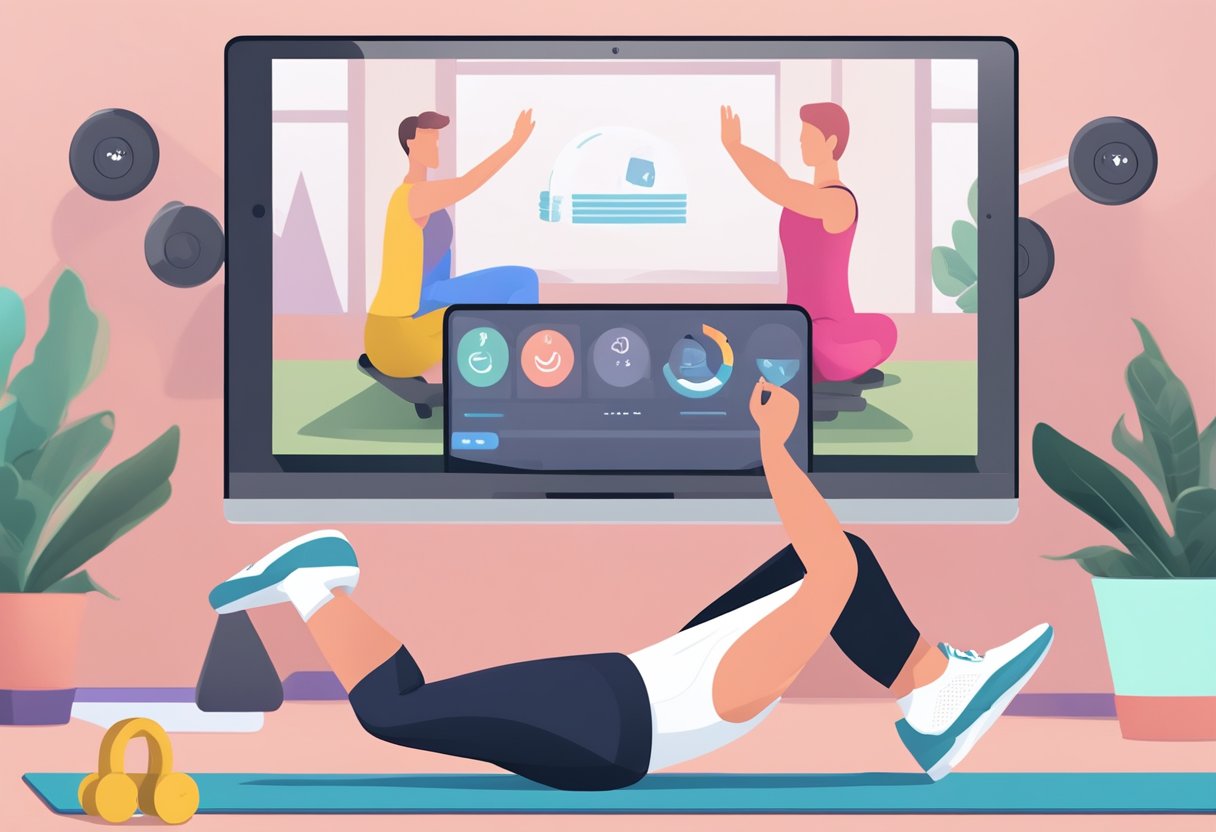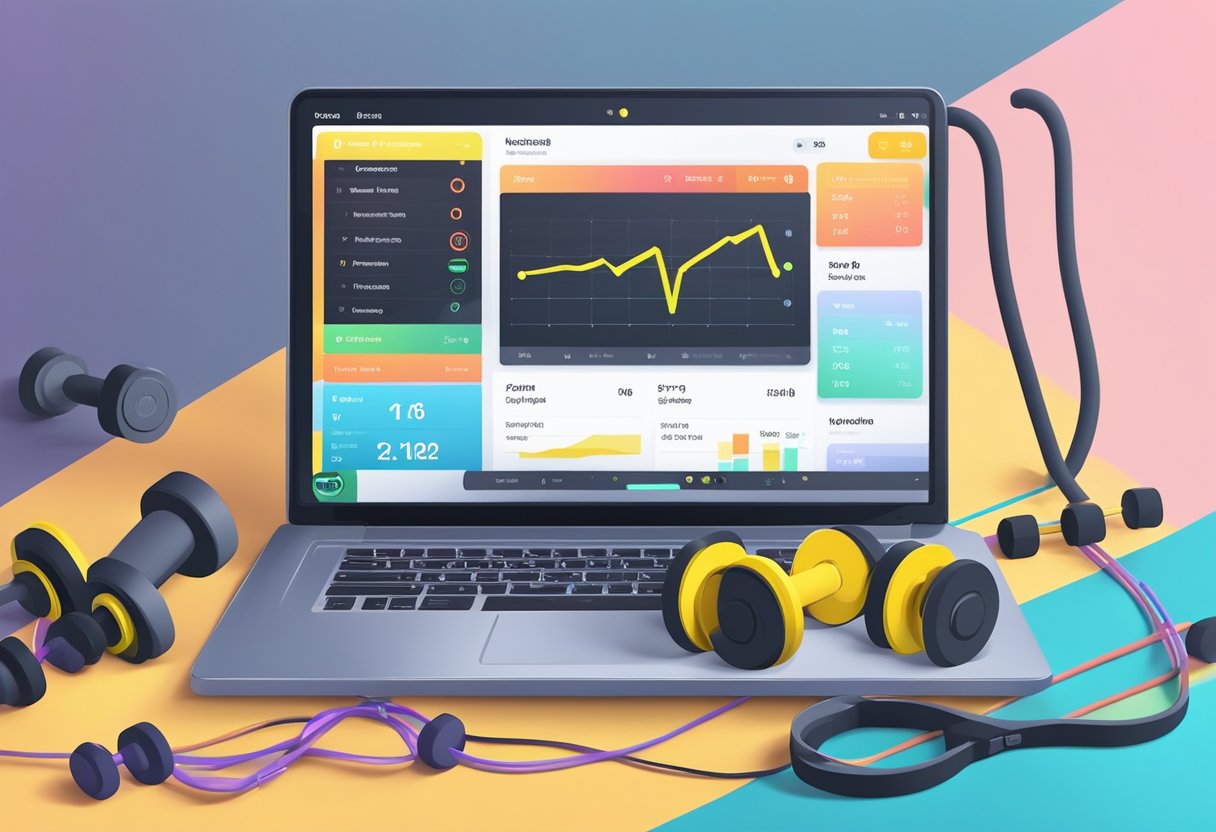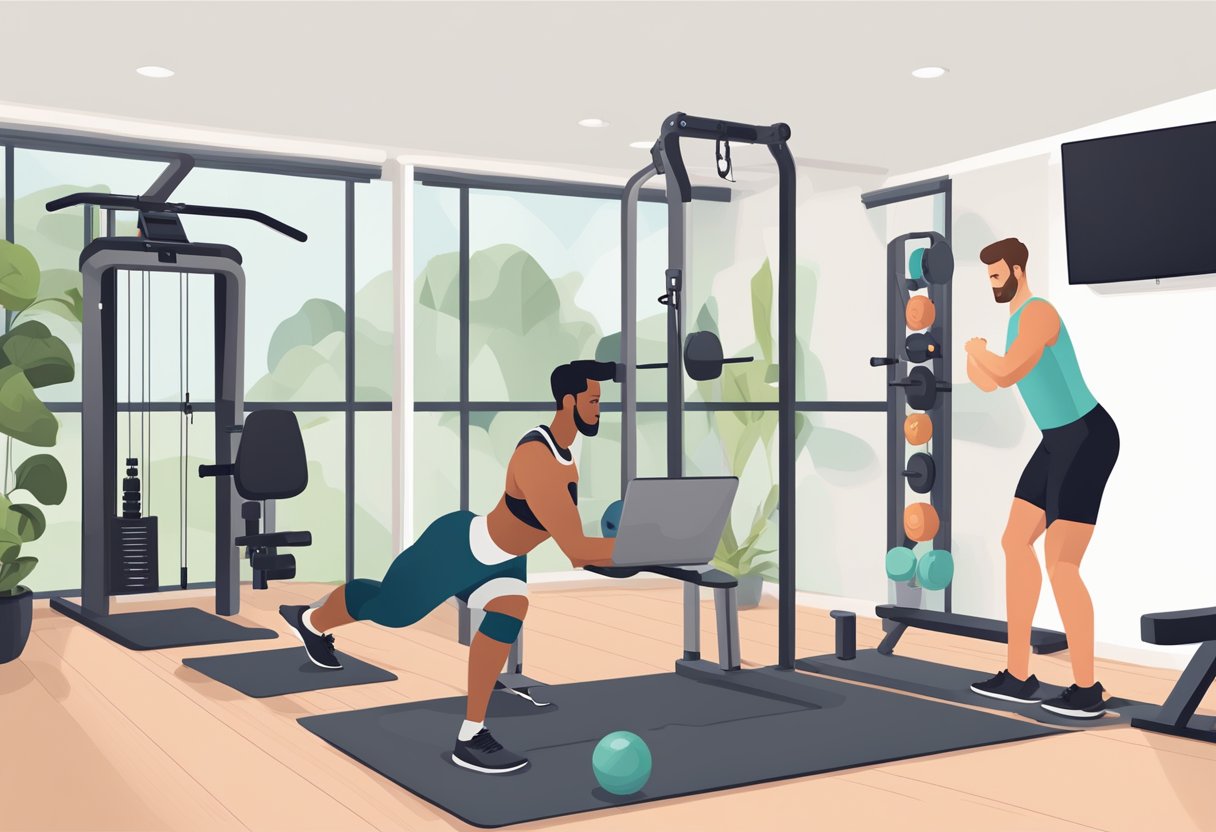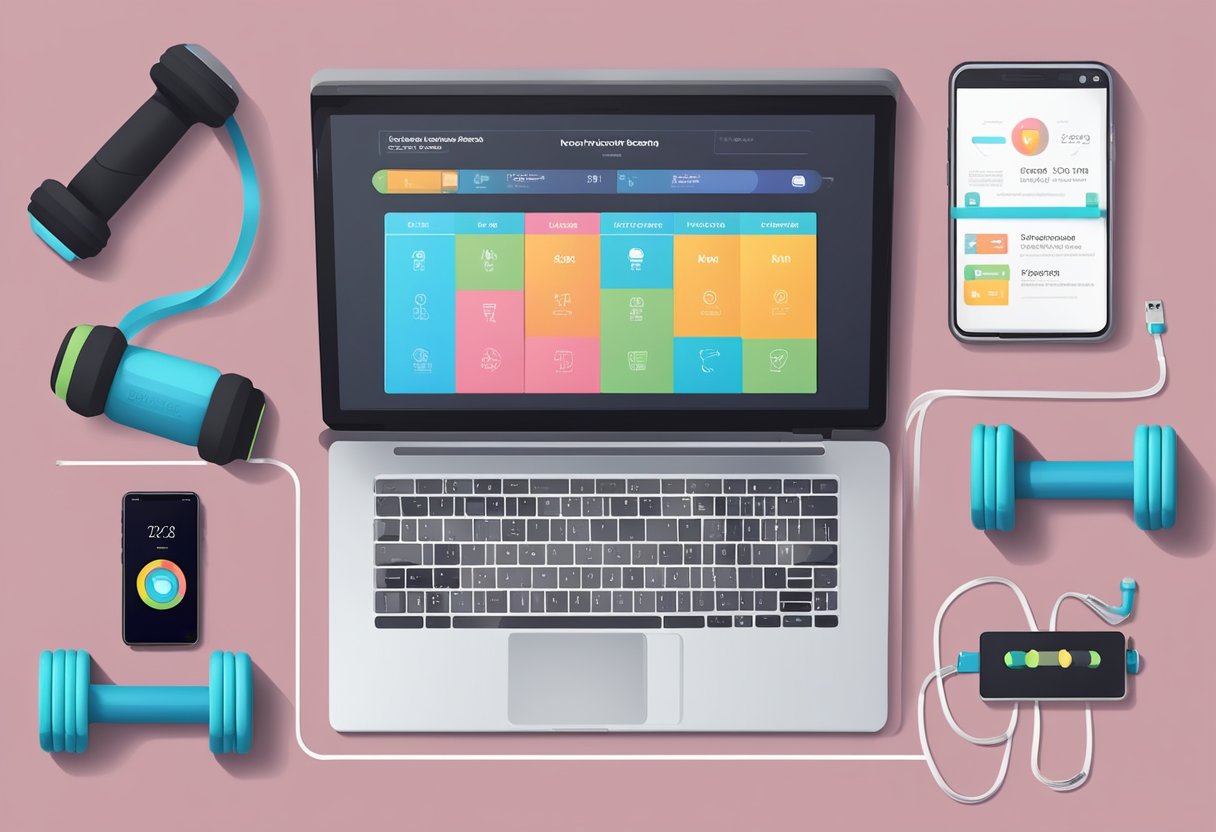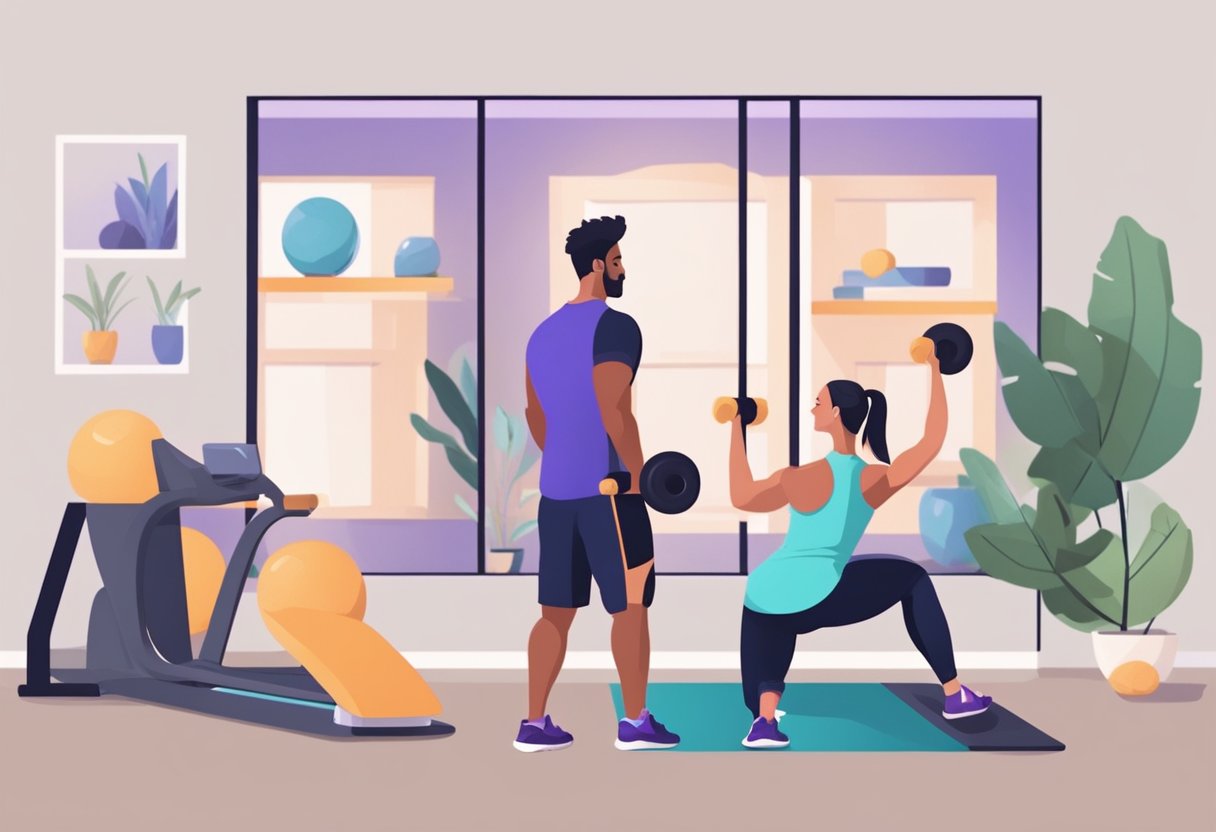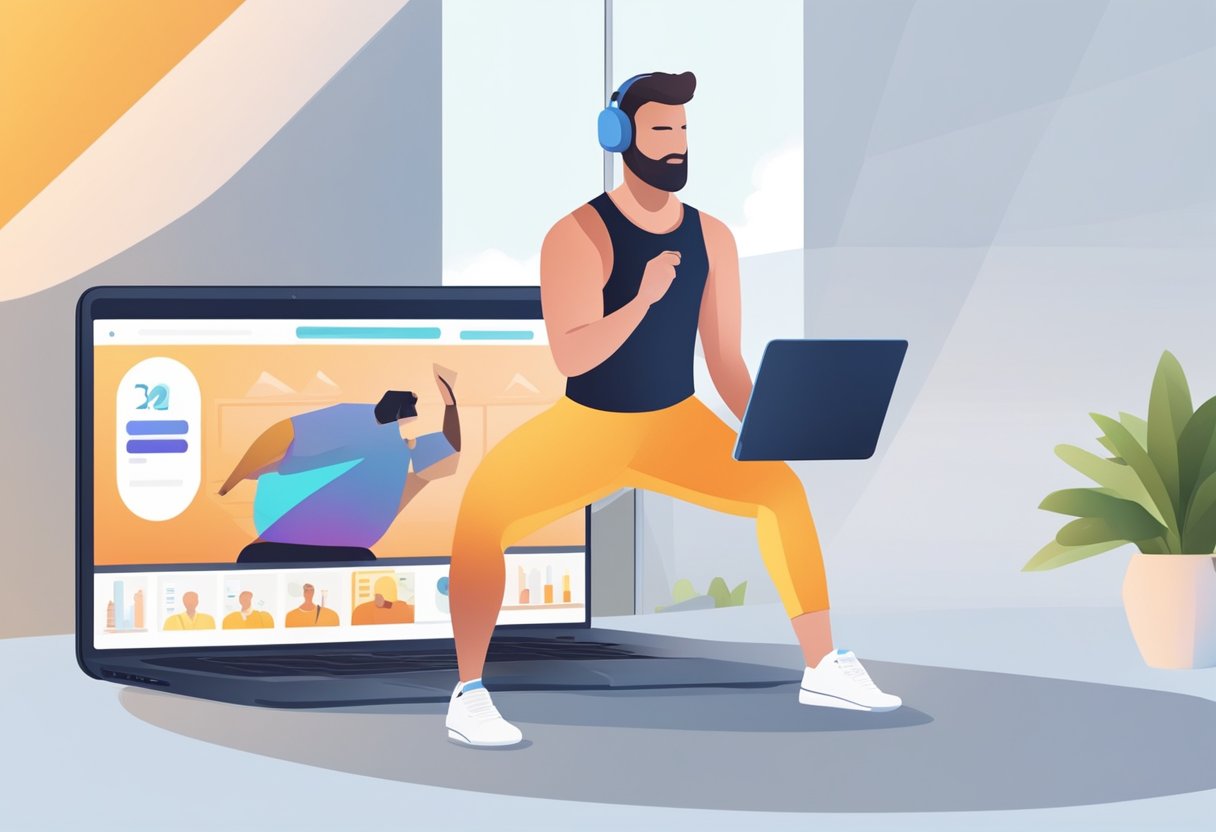Online personal training has revolutionized the way you can achieve your fitness goals.
You share your fitness goals and history, and a trainer tailors a bespoke program to your needs.
This flexibility allows you to maintain a workout routine that fits seamlessly into your lifestyle.

You will engage in virtual consultations with your trainer, discuss your fitness objectives, and receive a unique training plan.
Popular Posts
- Massage Gun vs. Foam Roller: Which Recovery Tool Reigns Supreme?
- 27 Best Calisthenics Exercises for Full-Body Strength and Fitness
- 10 HIIT Workouts for Busy Professionals: Max Fitness, Min Time
- Good Posture Working from Home: Optimize Your Workspace to Prevent Discomfort and Health Issues
- The Best Crossfit Exercises for Full-Body Conditioning
Leveraging digital tools, you can track progress, communicate with your trainer, and even receive feedback on your form.
It’s a holistic approach that makes achieving fitness milestones more accessible.
Platforms such as WRKOUT offer packages that range from four to eighteen sessions a month, giving you the frequency and intensity you need.
Additionally, apps often sync with devices like the Apple Watch, providing an integrated fitness experience directly at your fingertips.
Understanding Online Personal Training

Online personal training leverages technology to provide flexible, accessible, and tailored fitness guidance.
It involves certified personal trainers creating customized fitness plans and offering support through various online platforms.
Defining Online Personal Training
Online personal training refers to fitness coaching delivered via digital platforms.
Unlike traditional in-person training, it enables you to receive expert guidance from certified personal trainers regardless of your location.
This method uses email, video calls, specialized apps, and social media to communicate workouts, track progress, and offer support.
This training can range from one-on-one virtual sessions to downloadable programs.
Your trainer may provide personalized workout plans, nutritional advice, and regular check-ins.
It offers a higher degree of flexibility, allowing you to schedule sessions that fit your lifestyle.
History and Evolution
The evolution of online personal training began with the rise of the internet and advances in technology. Initially, fitness enthusiasts relied on online forums and YouTube videos.
As technology evolved, professional training became more interactive and accessible.
The COVID-19 pandemic significantly accelerated this trend.
Social distancing measures and gym closures led to a surge in demand for virtual fitness solutions.
Trainers quickly adapted by offering services via Zoom, Skype, and other platforms.
Today, online personal training is a mainstream option that’s here to stay.
Key Components of Online Training
Online personal training comprises several critical elements.
First, the consultation phase involves discussing your fitness goals, medical history, and lifestyle. This helps the trainer design a program that meets your needs.
Next, the programming phase involves creating a tailored workout plan that includes a mix of cardio, strength training, and flexibility exercises.
You’ll also receive nutritional guidance tailored to your goals.
Regular communication is another key component. This can be through video calls, emails, or app messaging.
Progress tracking is crucial, with trainers using various tools to monitor your development and make adjustments as needed.
Access to a broader range of certified personal trainers and fitness methodologies ensures you get the most comprehensive support available.
Getting Started with Online Personal Training
To get started with online personal training, it’s important to select the right platform and trainer, set up an appropriate space with necessary equipment, and perform initial assessments and consultations to tailor the training to your needs.
Choosing the Right Platform and Trainer
Begin by finding a personal trainer who matches your fitness goals and preferences. Look for trainers with credible certifications and experience.
Platforms such as StrengthLog and PTDC list a variety of trainers who can meet different needs.
Consider the apps and tools they use, such as video conferencing software and workout tracking apps.
Evaluate how they communicate and their ability to provide personalized plans.
Read reviews or request a trial session to gauge compatibility.
Setting Up Your Space
Create an exercise-friendly environment at home or in a small gym.
This space should be free of clutter and distractions. Essential equipment varies depending on the training program but often includes dumbbells, resistance bands, and yoga mats.
Ensure you have a reliable internet connection for uninterrupted sessions and a device with a camera that captures your movements clearly.
Good lighting also helps your trainer see your form and provide accurate feedback.
Initial Assessments and Consultation
An initial consultation sets the stage for your training.
Expect to fill out a detailed questionnaire covering your fitness history, goals, and any medical conditions.
This helps the trainer design a program suited to your needs.
During the consultation, you may perform physical assessments such as flexibility tests or basic strength exercises.
This information helps your trainer understand your capabilities and limitations, ensuring a safe and effective training program.
The Training Process
The effectiveness of online personal training hinges on personalized workout plans, consistent accountability, and clear channels of communication. These elements ensure that your fitness goals are met efficiently.
Customization of Training Plans
An online personal trainer starts by conducting a detailed consultation to understand your fitness goals, health conditions, and lifestyle.
This information is critical for tailoring a training plan. The plan includes specific exercises, intensity levels, and progress milestones designed to meet your unique needs.
Exercise routines often come with instructional videos to ensure correct form.
Regular updates to the training plan accommodate your progress and any new fitness objectives you might set.
This bespoke approach maximizes the potential for achieving your fitness goals.
Accountability and Tracking Progress
Accountability is a cornerstone of successful online personal training.
Trainers use various tools to track your progress, including fitness apps, wearable devices, and regular check-ins.
These tools help monitor metrics such as weight, body composition, and workout completion rates.
Regular progress reports keep you informed of your achievements and areas needing improvement.
By maintaining accountability, the likelihood of sticking to your program increases significantly.
This consistent tracking ensures you stay aligned with your fitness goals.
Feedback and Communication
Effective communication is essential for the success of any online training program.
Trainers typically offer multiple communication channels such as email, chat, and video calls.
Regular feedback sessions provide you with insights into your performance and areas where you can improve.
This two-way communication ensures that any issues can be quickly addressed, and adjustments to your training plan can be made in real-time.
Consistent communication fosters a supportive environment that can motivate you to stay committed to your fitness journey.
Technology and Tools
Advancements in technology have significantly transformed online personal training, making it more accessible and personalized. From dedicated training apps to wearable tech, these tools help enhance the overall experience for both trainers and clients.
Devices and Applications
Online personal training relies heavily on devices like computers, smartphones, and tablets.
Both trainers and clients use these devices to access training apps and manage sessions.
Apps such as Trainerize and MyFitnessPal enable trainers to track progress, set goals, and communicate with clients in real-time.
Reliable internet and high-quality webcams are essential for clear video sessions.
For Android and iOS users, many training apps are compatible across both platforms, ensuring broad accessibility.
Instructional Videos and Demonstrations
Instructional videos and demonstrations are key components of online training.
Trainers often create or curate high-quality videos to guide clients through various exercises.
These videos ensure correct form and technique, minimizing the risk of injury and maximizing effectiveness.
Platforms like YouTube and Vimeo are commonly used to host and share these videos.
Additionally, many training apps come with built-in libraries of exercise demonstrations, making it easy for clients to follow along.
Integrating Wearable Tech
Wearable technology, such as smartwatches and fitness trackers, offers valuable data to both trainers and clients.
Devices like the Apple Watch and Fitbit monitor metrics such as heart rate, activity levels, and sleep patterns.
This data allows trainers to tailor programs more precisely to individual needs.
These devices often sync seamlessly with training apps, making it simple to track and analyze progress.
By incorporating wearable tech, the overall training experience becomes more data-driven and personalized, enhancing outcomes.
Personalized Support
Online personal training provides extensive personalized support that caters to your specific fitness and dietary needs. This includes tailored nutrition and meal planning, consistent motivation and encouragement, and specialized coaching for your unique goals.
Nutrition and Meal Planning
A key component of online personal training is nutrition and meal planning.
Your personal coach will evaluate your dietary habits and requirements to create customized meal plans.
These plans consider your fitness goals, whether it’s losing weight, gaining muscle, or improving overall health.
Meal plans often feature a variety of nutrient-rich foods and are structured in a way that is easy to follow.
You gain access to dietary advice and recipes that align with your preferences and lifestyle.
This personalized approach ensures that your nutritional needs are met and supports your fitness journey effectively.
Motivation and Encouragement
Maintaining motivation is crucial for achieving fitness goals.
Online personal trainers provide a robust platform for motivation and encouragement.
They utilize regular check-ins, progress tracking, and virtual support to keep you motivated.
Engaging with your trainer through video calls, messages, and app notifications allows for real-time feedback and continuous encouragement.
This support system helps in building discipline and staying committed to your workout routines.
Regular positive reinforcement and goal setting make it easier for you to stay on track.
Specialized Coaching
Specialized coaching is a significant advantage of online personal training.
Coaches customize workout plans to suit your individual needs, whether you’re focusing on strength training, flexibility, or endurance.
These plans are adaptable and evolve based on your progress and feedback.
Your trainer provides detailed instructions and demonstrations to ensure you perform exercises correctly, minimizing the risk of injury.
They also offer personalized adjustments and modifications based on your performance.
This level of specialized coaching ensures you maximize the benefits of your workouts and achieve your fitness goals efficiently.
Advantages of Online Personal Training
Online personal training offers several benefits that cater to a variety of fitness needs and preferences. This section will break down key advantages, providing insight into why many people choose this modern approach to fitness.
Flexibility and Convenience
One of the main advantages of online personal training is its flexibility.
You can schedule workouts that fit into your busy day without worrying about gym hours or class schedules.
Whether you’re an early riser or prefer late-night sessions, online trainers can accommodate your timetable.
Not only can you work out from home, but you can also exercise from practically anywhere.
This eliminates the need for commuting to a gym, reducing time and stress.
The ability to train in your own space can also make sessions more comfortable and personalized.
Affordability and Value
Online personal training often comes at a lower cost compared to traditional, in-person training.
This makes fitness coaching more accessible to a wider range of people, without sacrificing the quality of instruction.
Subscriptions and packages can offer significant savings, making it a budget-friendly option.
Moreover, many online training platforms provide access to a wealth of resources.
From workout libraries to nutrition plans, these added features enhance the value of your training program.
By paying for just one service, you get comprehensive support that extends beyond workouts alone.
Wide Range of Expertise
When you opt for online personal training, you get access to a wide range of experts from around the globe.
This means you can find a trainer who specializes in exactly what you’re looking for, whether it’s weight loss, muscle building, or sports-specific training.
You are not limited to local trainers, so you can choose someone with the specific certifications and experience that match your goals.
The diversity of expertise available online can help you achieve more targeted and effective results.
By leveraging the expertise available online, you can ensure that you receive high-quality instruction tailored to your unique fitness needs.
Challenges and Considerations
Success in online personal training often hinges on effective communication, managing technical issues, and maintaining a personal connection with clients. Each of these aspects plays a crucial role in delivering a positive and productive training experience.
Ensuring Effective Communication
Effective communication can be challenging when personal training is conducted online.
Without face-to-face interaction, you may struggle to convey nuances or urgency effectively.
Important details, such as form corrections or motivation, can be lost in text or video formats.
To address this, you must set up regular check-ins and use clear, concise language.
Tools like video calls or detailed instructional videos can help bridge the gap.
Establishing a reliable communication schedule ensures both trainer and client remain on the same page.
Dealing with Technical Issues
Technical issues are inevitable in an online setting.
Internet connectivity problems, software glitches, and hardware malfunctions can disrupt sessions.
These interruptions not only waste time but can also frustrate both trainer and client.
To prevent these issues from derailing your training, prepare by having a backup plan for such occurrences.
This could include having alternative communication methods, such as instant messaging apps, or pre-recorded workout videos.
Make sure to use user-friendly platforms and confirm that your clients are comfortable with the technology.
Maintaining Personal Connection
Maintaining a personal connection online requires extra effort.
In-person sessions naturally build rapport through casual interactions and shared experiences. Online, you need to be more intentional about creating this bond.
Personalize your approach by acknowledging your client’s progress and struggles.
Use their names often and remember details about their lives.
Interactive elements, like live feedback during workouts, can also foster a sense of connection.
Flexible communication methods, such as video messages, can make interactions feel more personal.
Comparing Online and In-Person Training
When deciding between online personal training and in-person training, factors like convenience, cost, and personalized feedback play crucial roles in determining the best option for your needs.
Pros and Cons of Each Mode
Online Personal Training:
- Pros:
- Flexibility: Train anytime and anywhere, fitting sessions into your busy schedule.
- Cost-Effective: Often cheaper than in-person training due to lower overheads.
- Wide Access: Connect with certified trainers from around the world.
- Cons:
- Technique Monitoring: Difficult for trainers to ensure perfect form remotely.
- Lack of Immediate Feedback: Corrections to your technique may not be as prompt.
- Motivation: Requires self-discipline to stick to the program without a trainer physically present.
In-Person Training:
- Pros:
- Real-Time Feedback: Trainers can immediately correct your form and technique.
- Motivation: The physical presence of a trainer can be highly motivating.
- Personal Interaction: Direct, face-to-face communication improves clarity and understanding.
- Cons:
- Scheduling: Finding a time that fits both you and your trainer’s schedules can be challenging.
- Higher Costs: Sessions with an in-person personal trainer can be more expensive.
- Location Limitations: You must travel to a gym or a specific location.
Identifying Your Training Needs
Choosing between online and in-person training depends on your specific goals and lifestyle.
If you have a busy schedule, online personal training offers greater flexibility. You can train at home, eliminating commute times to the gym.
For those who need hands-on guidance, in-person training ensures immediate corrections and personalized attention.
Your trainer can adapt exercises in real-time based on your immediate feedback and performance.
Budget is another important consideration.
Online training can be more cost-effective, making high-quality training accessible to more people.
Conversely, if budget allows and you need more motivation and accountability, investing in an in-person personal trainer could be beneficial.
Hybrid Training Approaches
A hybrid training approach that combines elements of both online and in-person training can offer the best of both worlds.
Utilize online personal training for its flexibility and convenience during the week.
Complement this with periodic in-person sessions for detailed feedback and technique correction.
You might start with an in-person personal trainer to learn the basics and establish a solid foundation.
Once comfortable, transition to online sessions for ongoing guidance and support.
This method maximizes the benefits of each mode, providing flexibility while still ensuring high-quality, personalized feedback.
Another option is joining group sessions online combined with occasional private in-person training.
This way, you gain community support and motivation from online group classes while fine-tuning your technique with a trainer in-person.
Could 25 Minute Workouts be the answer?
25 Minute Workouts offer a quick, efficient way to achieve your fitness goals. These sessions focus on interval training techniques such as circuit training, Tabata, and HIIT. You don’t need a gym membership; all you need is an internet connection and a small space in your home.
Key Benefits:
- Flexible Scheduling: You can train anytime that suits your schedule with a live online personal trainer.
- Customized Programs: Each workout is tailored to your specific goals, whether it’s weight loss, strength training, or improving cardiovascular health.
- Daily Support: Trainers provide ongoing support and accountability to keep you motivated.
In NYC, Get the Best:
If you live in NYC, in-person options are also available. This means you can get the same high-quality training at your home or private gym if you prefer face-to-face sessions sometimes.
Types of Training Available:
- Strength & Cardio: Quick and effective workouts designed to be injury-free.
- Yoga & Pilates: Improve flexibility and strength with routines that make you more attuned to your body.
- Sports Specific: Perfect for athletes wanting to stay on top of their game or for anyone looking to keep fit.
- Kids Training: Programs for children to ensure they stay active and healthy.
Additional Features:
- Live Interaction: Real-time corrections and encouragement ensure proper form and motivation.
- Meal Plans: Nutrition plans designed to complement your workouts and help you achieve your fitness goals faster.
Frequently Asked Questions
Engaging with an online personal trainer can provide various benefits, from tailored fitness plans to flexible scheduling. However, potential drawbacks include challenges with assessing proper form and the lack of physical presence.
What are the benefits of engaging in online personal training?
Online personal training offers convenience, privacy, and often lower costs compared to in-person sessions. You can access a wider range of professionals and benefit from customized workout plans and nutrition advice.
How do online personal trainers and nutritionists deliver their services?
Trainers and nutritionists use video calls, apps, and online platforms to deliver tailored workout plans, monitor progress, and provide feedback. This digital approach ensures you receive support and guidance anytime, anywhere.
In what ways can online personal training programs differ from one another?
Programs vary in terms of focus, such as strength training, HIIT, or mobility work. Some programs include tailored nutrition plans, while others emphasize fitness alone. The cost can also differ significantly.
What should one expect from a virtual fitness coaching experience?
You can expect regular video sessions, personalized workout plans, and ongoing communication via messaging or emails. Some platforms offer additional resources like instructional videos and community support.
What are the potential drawbacks of choosing an online personal training service?
The main challenges include difficulty in assessing your form and technique, which can lead to improper exercise execution. Additionally, the lack of in-person motivation might affect your consistency and commitment.
How can online personal trainers ensure a client’s progress and accountability?
Trainers use tracking tools, regular check-ins, and progress reports to monitor your development. They may also set specific goals and provide continuous feedback to help you stay motivated and on track.

